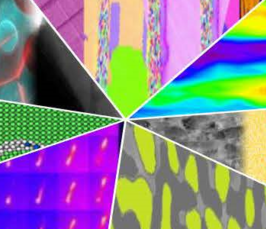MEMS-based in-situ Nanomechanics of Crystalline Nanowires
- Date: Mar 4, 2021
- Time: 04:00 PM c.t. (Local Time Germany)
- Speaker: Prof. Yong Zhu
- Location: Virtual Lecture
- Host: Dr. Christian Liebscher

Crystalline nanowires are not only important building blocks for many device applications such as flexible and stretchable electronics, but also an ideal platform to study fundamental nanomechanics. However, mechanical testing of nanowires is not trivial. In this talk, I will start with reviewing the recent advances in a promising nanomechanical testing method based upon microelectromechanical systems (MEMS). The advances include testing at high temperature, high strain-rate testing, and displacement-controlled testing with feedback control. Next, I will highlight several recent studies using MEMS-based in-situ TEM testing: 1) Effect of free surface on the plasticity mechanisms (twinning vs. slip). We observed competition of twinning and slip in single-crystalline metallic nanowires – dependent on the cross-sectional shape of the nanowire – which was attributed to the change of surface energy associated with each mechanism. 2) Effect of twin boundary on plasticity. We found that twin boundaries (either one or five) along the nanowire length direction can cause interesting recoverable plasticity and Bauschinger effect. In addition, we observed and investigated an anomalous tensile detwinning mechanism when one twin variant is much smaller than the other. 3) Hydrogen embrittlement. We probed hydrogen embrittlement using metallic nanowires as a model system. We found increasing yield strength and brittle failure with the presence of hydrogen, which was attributed to the hydrogen-induced suppression of dislocation nucleation at the free surface. 4) Brittle to ductile transition. We found that the crystalline Si nanowires under tension are brittle at room temperature but exhibit ductile behavior with dislocation-mediated plasticity at elevated temperatures. We revealed that the unconventional 1⁄2<110>{001} dislocations become activated with increasing temperature. I will conclude the talk with challenges and perspectives of MEMS-based in-situ nanomechanical testing.